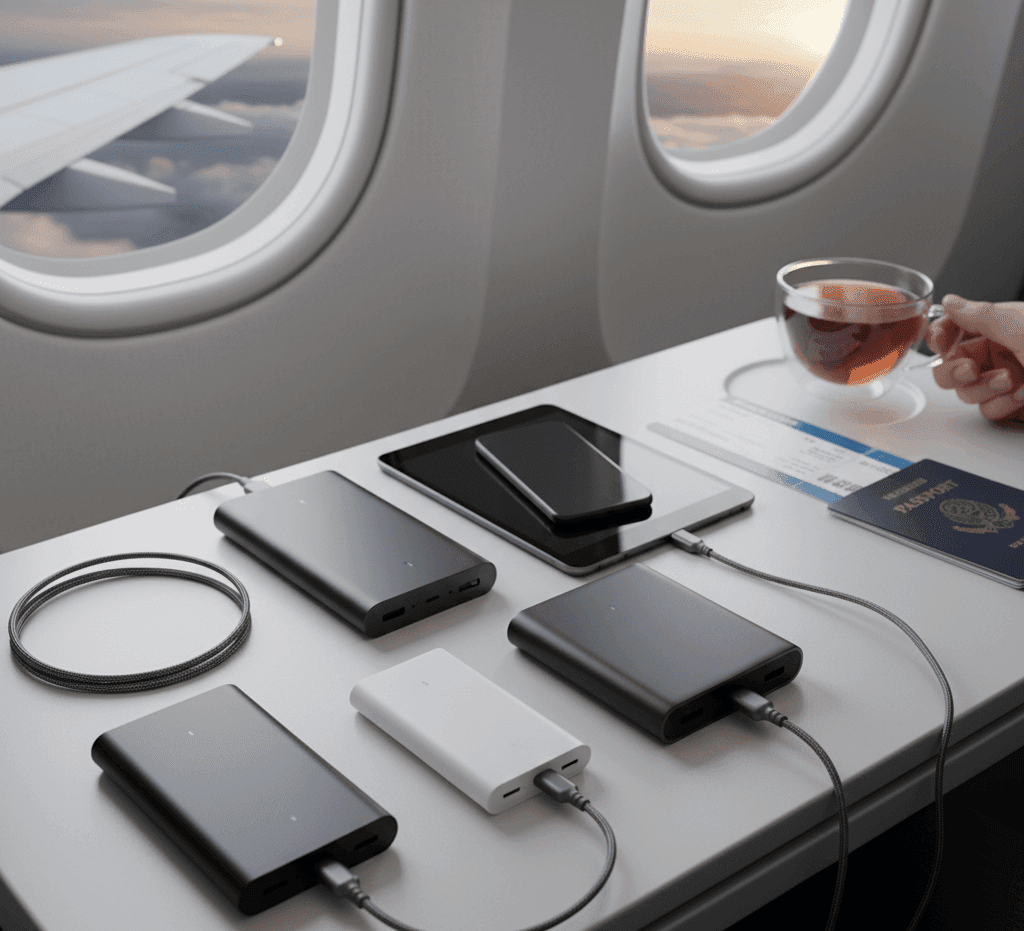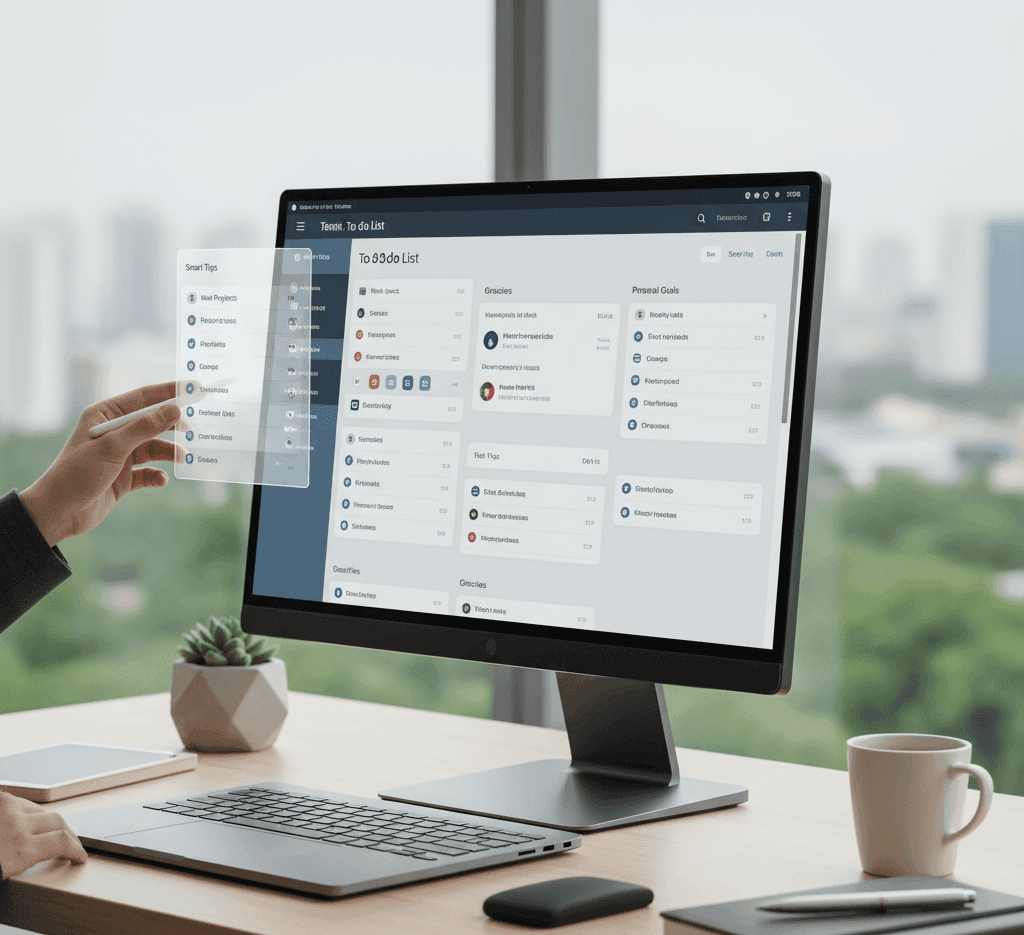Best Portable Power Banks for Long Flights
Smartphones

Flying long-haul can be a tech nightmare when your phone, tablet, or laptop runs out of battery — and airport outlets might be scarce or inconvenient. That’s why choosing the right portable power bank is essential. In this guide, you’ll learn what features matter most, how to stay within airline rules, and which power banks reliably keep you juiced through long flights.
Why a Good Power Bank Matters for Flights
On a long journey, you might face:
- Limited or no easy access to power outlets
- Multiple devices to charge (phone, tablet, headphones, etc.)
- The need to conserve battery during layovers or unexpected delays
A smart, high-quality power bank acts as your travel safety net. But not just any battery pack will do—you need one that balances capacity, safety, portability, and airline compliance.
What to Look for in a Flight-Friendly Power Bank
1. Capacity & Airline Limits
Airlines usually restrict power banks to 100 Wh (watt-hours) or less in carry-on luggage without special approval. Exceeding that may get your device rejected at security.
To convert:
Wh = (mAh ÷ 1000) × Voltage (usually ≈ 3.7 V)
So a 27,000 mAh bank is about 99.9 Wh and is borderline acceptable. Be sure to check your power bank’s Wh rating.
2. Fast Charging / Output Power
You want USB-C Power Delivery (PD), Quick Charge, or equivalent protocols for faster, efficient charging. A 20W to 100W output is often enough for phones and tablets; higher wattage is helpful for laptops.
3. Multiple Ports & Simultaneous Charging
If you bring more than one device, look for power banks with multiple USB-C/USB-A ports or even USB-C passthrough (charge bank while using it).
4. Compact & Lightweight Design
You don’t want to lug a heavy brick through airports. A well-designed pack with high energy density is key.
5. Safety Features
Overcharge protection, temperature control, quality battery cells—these reduce the risk of failure or thermal events in flight.
Tips for Using Power Banks on Flights
- Always pack it in your carry-on, not in checked baggage.
- Fully charge the power bank before your flight.
- Label Wh or mAh, so TSA or airline staff see specs easily.
- Don't rely on in-seat USB ports (some flights disable them).
- Use it strategically — top up only when battery is low to reduce heat buildup.
Top Power Bank Models to Consider (2025)
Here are some models worth checking out. Always double-check the specs for Wh and airline compliance:
Anker 25,000 mAh (165W) Retractable Cable Power Bank
Samsung 20,000 mAh Power Bank
Romoss 60,000 mAh PEA60 Power Bank
Ugreen 10,000 mAh Fast Charge Power Bank
Xiaomi Redmi Fast Charge Power Bank
Solar 20,000 mAh Stand Power Bank
Here are a few highlights:
- Anker 25,000 mAh (165W) Retractable Cable Power Bank — High output, built-in cable, ideal for multiple devices.
- Samsung 20,000 mAh Power Bank — Good balance of capacity and size for flights.
- Romoss 60,000 mAh PEA60 Power Bank — Massive capacity, but check Wh rating to confirm it’s airline-legal.
You can use these as reference when you choose which ones to feature and link to in your published post.
Up Next
Apps & AI Tools
Top To-Do List Apps for Staying Organized (With Smart Tips)

Choosing the Right To-Do List App: What Matters in 2025
Before jumping into app names, let’s talk about what actually makes a to-do list app good. Over the years, user expectations have shifted: simple checklists aren’t enough anymore. A top app in 2025 should deliver:
- Quick task entry & natural language — You want to type “Call Sarah tomorrow 3 pm” and have that parse into a task + date.
- Cross-platform sync — Whether you're on phone, tablet, web, or desktop, your tasks should stay in sync.
- Flexible organization — Tags, projects, folders, or boards: let people arrange based on their style.
- Smart reminders / scheduling aids — Nudges, deadlines, due dates, recurring tasks all done well.
- Clean UI + performance — It should feel smooth, minimal, and pleasant to use daily.
Best To-Do List Apps to Try in 2025
Below are several leading apps with unique strengths. Try a few to see what resonates with your workflow.
1. Todoist
Widely recognized as an all-rounder, Todoist blends power and ease. You get natural language parsing for tasks, project and label features, and multi-platform support.
Pros:
- Excellent cross-platform support
- Robust free tier
- Good for both simple lists and deeper projects
Things to watch: Some advanced filters & automations require Premium.
2. TickTick
TickTick offers task + calendar views, built-in timers (Pomodoro), and habit tracking. It’s ideal if you like having everything in one spot.
Pros:
- All-in-one interface
- Great for people who like combining schedules + tasks
- Solid free option
3. Microsoft To Do
Especially if you're in the Microsoft ecosystem, this is a strong choice. Seamless integration with Outlook, flagged emails, and Windows features.
Pros:
- Completely free
- Tight integration with Microsoft apps
- Simple, no-frills tool
4. Apple Reminders / Things (for Apple Users)
If you're embedded in the Apple ecosystem, Apple Reminders is a solid default. For more power, Things offers polished design and advanced organization (Note: Things is Apple-only).
5. Any.do
A strong contender for users who want simplicity + syncing across devices. It’s designed for consistency across web, mobile, and desktop.
Tips to Get the Most Out of a To-Do App
Here are strategies to make any app more effective:
- Use a “Quick Add / Inbox” for dumping thoughts
When a task comes to mind, jot it in your inbox first; sort later. - Limit projects or categories
Too many projects leads to overwhelm. Use a handful you actively use. - Schedule review sessions
Weekly check-ins help you clean up, reprioritize, and archive. - Use reminders but don’t overload
Set reminders only for tasks you truly might forget; avoid clutter. - Leverage integrations / automations
Some apps let you connect with calendar apps, email, or productivity tools. - Test for a month
Use the free tier or trial — consistency is the test, not features alone.
How These Apps Were Chosen
These apps were selected based on usability, cross-platform support, feature depth, design quality, and consistent updates. They’re trusted by productivity enthusiasts and professionals worldwide for personal and team use alike.
Up Next
Apps & AI Tools
Why Employee Navigator Is Changing the Game for HR & Benefits Teams

Transforming HR with Employee Navigator
In today’s fast-paced business environment, HR teams face mounting pressures: juggling benefits enrollment, compliance, onboarding, and employee data — all without creating bottlenecks. That’s where Employee Navigator comes in. It's a cloud-based, all-in-one HR and benefits administration platform designed to streamline these tasks and free HR professionals to focus on strategy, not paperwork.
Originally built for brokers to manage benefits and clients, Employee Navigator has grown into a matured HR tool used by companies across industries.
Core Features That Stand Out
Here’s a breakdown of the key capabilities that make Employee Navigator compelling:
Benefits & Business Impact
1. Efficiency Gains & Time Savings
By automating repetitive tasks — such as benefits enrollment, life event updates, or document routing — Employee Navigator helps HR teams reclaim hours each week.
2. Reduced Errors & Administrative Stress
Manual entries often lead to mistakes. With synchronized data flow and audit trails, this tool lowers the risk of miscalculations or compliance slip-ups.
3. Scalability for Growing Teams
As your headcount or benefits complexity grows, the system scales — handling more users, more benefit plans, and more compliance rules.
4. Empowered Employees, Less HR Churn
When employees can manage basic tasks via self-service, HR doesn’t get bogged down in emails or paperwork. That contributes to better morale and fewer bottlenecks.
Considerations Before Implementation
No platform is perfect for everyone. Here are some points to assess:
- Implementation effort — Migrating legacy data and configuring benefit plans can require careful planning.
- Training & adoption — Users (HR and employees) will need orientation for a smooth transition.
- Cost & pricing model — The base pricing starts relatively high for small companies.
- Customization vs. standardization — Highly customized workflows may push the system’s limits.
- Regulation coverage — If your operations span multiple countries or unique regulations, verify compliance support.



